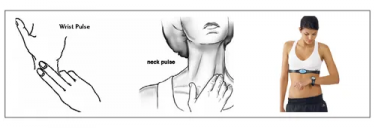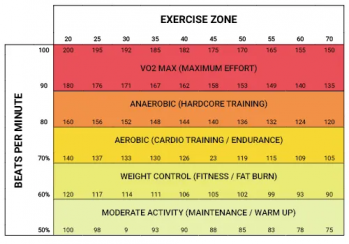
Whether you choose to walk, jog or run, a treadmill allows you to enjoy your exercise no matter the weather.
If you’re looking for a treadmill workout that will help you burn some calories and get in shape, you’ve come to the right place. Following a structured programme is a great way to maximise your workout time so follow one of our programs and reach your goals quicker.
Read on to find out the benefits of and correct use of an elliptical machine training, or jump straight to the workouts here.
First, let’s start with the basics. A treadmill is a great way to get your heart rate up and start burning calories. But before you start your treadmill workout, it’s important to warm up. Walking for a few minutes at a slow pace will get your muscles ready for the more intense workout to come.
Once you’re warmed up, it’s time to increase the intensity of your treadmill workout. You can do this by increasing the speed of the treadmill, or by increasing the incline. Both of these options will help you burn more calories and get your heart rate up.
If you’re looking to really challenge yourself, you can try interval training on the treadmill. This involves alternating between periods of high-intensity exercise and low-intensity exercise. For example , you might sprint for 30 seconds and then walk for a minute. This type of treadmill workout is a great way of burning calories and improving your fitness level.
No matter what type of treadmill workout you’re doing, it’s important to stay hydrated. Be sure to drink plenty of water before, during, and after your treadmill workout.
How Long Is a Good Workout on a Treadmill?
How long you should workout on a treadmill depends on your fitness goals. If you’re just looking to get in a basic cardio workout, 20-30 minutes is a good place to start. However, if you’re looking to really challenge yourself and burn more calories, you may want to consider working out for 45 minutes or longer.
Can I Lose Weight on the Treadmill?
Yes, treadmills can be a great tool for losing weight. Treadmill workouts are an excellent way to burn calories and shed unwanted kilos. To see results, aim to workout at least 3-5 times per week for 30-60 minutes at a time. And be sure to mix up your routine by changing the speed and incline of your treadmill workouts. This will help you avoid plateaus and see continued results.
Warm-Up
It is best practice always warm-up before exercising as it increases the blood flow, preparing the muscles for activity, building your heart rate and cardiovascular system to reduce the risk of injury and strains.
You may choose to warm up with a light/brisk walking pace for 5-10 minutes before stopping and performing some simple stretches.
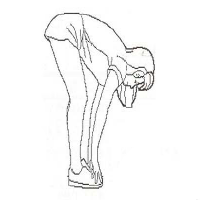 |
Hamstring Stretch (Standing) Keep your knees slightly bent and slowly lean forward, back and shoulders relaxed, reaching towards your toes. You should feel the tension and slight discomfort in your hamstring muscles.
Hold for 15-20 seconds. Repeat 2-3 times.
|
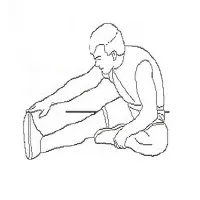 |
Hamstrings Stretch (Seated)Sitting on the floor preferably on a mat, put one leg straight, the other inward and close to the inside of the straight leg. Lean forward from the hips, reaching towards your toes.
Hold for 10-15 seconds, and relax. Repeat 3 times.
|
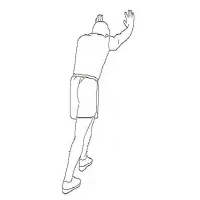 |
Crus and Feet Tendon StretchesStanding with two hands on the wall or tree, one leg behind. Keeping your legs straight and the heel on the ground, lean forward towards the wall or tree.
Hold for 10-15 seconds, and relax. Repeat 3.
|
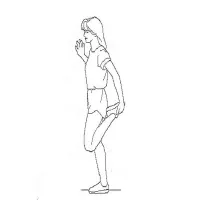 |
Quadriceps StretchesKeeping your balance with your left hand holding onto a wall or stationary fixture, grasp your right foot with your right hand and stretch your right heel toward your buttocks slowly, until you feel the stretch in the front of your thigh.
Hold for 10-15 seconds, and relax. Repeat 3 times.
|
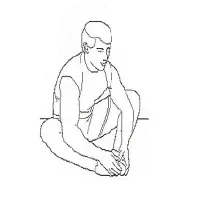 |
Sartorius (Inner Muscles of the Thigh) Muscle StretchesSitting down with the soles of your feet or shoes together and your knees positioned outward. Pull your feet towards your groin until you can feel the stretch.
Hold for 10-15 seconds, and relax. Repeat 3 times.
|
PRO TIP: Also it’s as equally important to stretch after exercise to help prevent any muscle soreness setting in the next few days. Repeat the stretches above post workout. |
SAFETY FIRST
- If you experience dizziness, nausea, chest pain, or any other abnormal symptoms, STOP the workout at once. CONSULT A PHYSICIAN IMMEDIATELY.
- No matter if you are an elite athlete or a weekend warrior, it is essential to drink enough water before, during and after exercise. Dehydration will stop you from getting the most out of your workout and feeling tip-top!
- Before using the machine to exercise, always do stretching exercises to properly warm up.
- Always wear appropriate workout clothing when exercising. Dress accordingly to the temperature and do not wear loose clothing that could become caught in the machine. Sporting shoes are recommended when using the treadmill.
- Use the machine only for its intended use
- Keep children and pets away from the machine at all time. DO NOT leave children unattended in the same room with the machine.
- Disabled persons should not use the machine without a qualified person or physician in attendance.
- Only one person at a time should use the machine.
- Inspect and tighten all the loose parts before this equipment is used.
- Keeps hands away from moving parts.
- Position the machine on a clear, leveled surface. DO NOT use the machine near water or outdoors.
- Inspect the machine before each use; make sure all of the connections are tightly secured.
- Do not place any sharp object around the machine.
- And lastly, ensure that you know how to operate your machine – check that your speed, incline and emergency stop is functional. Never operate the machine if the machine is not functioning properly.
Now let’s get to it!
The Workouts
These exercise guides are to help you work up a sweat, no matter your level of fitness.
Walking Treadmill Workout
This walking walkout incorporates changing inclines to increase intensity. If you’re new to treadmill workouts, you can start walking slowly until you find which speeds and inclines you’re comfortable with.

Beginner Treadmill Workout
This is a simple running workout which incorporates varying speeds on a steady incline. As you get more comfortable you can start to incorporate different incline changes into your intervals.
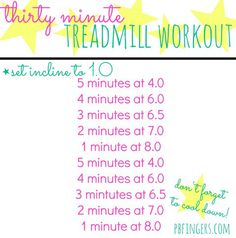
HIIT Treadmill Workouts
HIIT, or high-intensity interval training, is a type of exercise that involves alternating between periods of high-intensity effort and periods of recovery. High intensity interval training can be a great way to get your heart rate up, burn fat and improve your cardiovascular fitness.
If you’ve never done a HIIT treadmill workout before, they can be a little daunting.
Warming up is crucial before any type of workout, but it’s especially important before HIIT. You don’t want to start your treadmill workout cold, so make sure to warm up for at least 5 minutes before starting the main part of your workout
If you’re new to the HIIT treadmill workout, start with a lower intensity level and work your way up. The treadmill speed you use for your HIIT workout will depend on your fitness level. If you’re just starting out, aim for a treadmill speed of 3-4 mph for your high-intensity intervals. As you get more fit, you can gradually increase the treadmill speed to 5-6 mph
You can also increase the length of your workout as you get more comfortable with HIIT workouts.

Cooling down is also important after any type of workout, but it’s especially important after HIIT. You don’t want to stop your treadmill workout suddenly, so make sure to cool down for at least 5 minutes before stopping the treadmill
Target Heart Rate
| Cardiovascular Training plays an important part in maintaining a healthy heart and lung function, so it’s no surprise we should be paying attention to how quickly our heart beats during exercise. There are different heart rate training zones determined by the individual’s age and workout goals to ensure you train safely and effectively.
Before starting any workout regimen, it’s important to know what your target heart rate should be. Different types of workouts are performed at different intensities, or workout zones. Target heart rates are a percentage of your theoretical maximum heart rate and can help ensure that you’re neither working too hard nor not hard enough. By working out your theoretical maximum heart rate, you can figure out the target ranges and zones for different types of workouts . How to Calculate Your Maximum Heart Rate.A very simple method to find out your target heart rate, take your age and subtract it from 220. That number will be your maximum heart rate. From there, you can use the following formulas to calculate your target heart rate: 220 – AGE = TMHR (Theoretical Maximum Heart Rate in beats per minute) TMHR x 85% = (Upper Training Limit) bpm (Beats per Minute) TMHR x 65% = (Lower Training Limit) bpm Example: If you’re 39 years old, your max heart rate would be: 220 – 39 = 181 bpm 85% of this would be the upper limit for most workouts, while 65% would be the lower limit: 181 x 85% (0.85) = 154 bpm and 181 x 65% (0.65) = 118 bpm Remember, these are just guidelines. You may need to adjust based on how you’re feeling during your workout. If you’re working at a moderate intensity but don’t feel like you’re breaking a sweat, you may need to bump up the intensity. Similarly, if you’re working at a vigorous intensity but feel like you’re about to collapse, you may need to back off a bit. How to Measure Your Heart Rate During ExerciseYour heart rate can be measured by using the radial (wrist) or carotid (neck) pulse using your index and middle fingers, counting the beats for 10 seconds and multiplying by 6 to get the number of beats per minute.
Many sports watches will incorporate a heart rate monitor that utilises an optical sensor to calculate your heart rate from blood flow. Accuracy will vary by device and conditions but will give you a good estimate. Chest heart rate straps will give you the most accurate reading, as these measure the electrical signals from your heart.
Written by Elite Fitness Team, Updated October 2022 |
